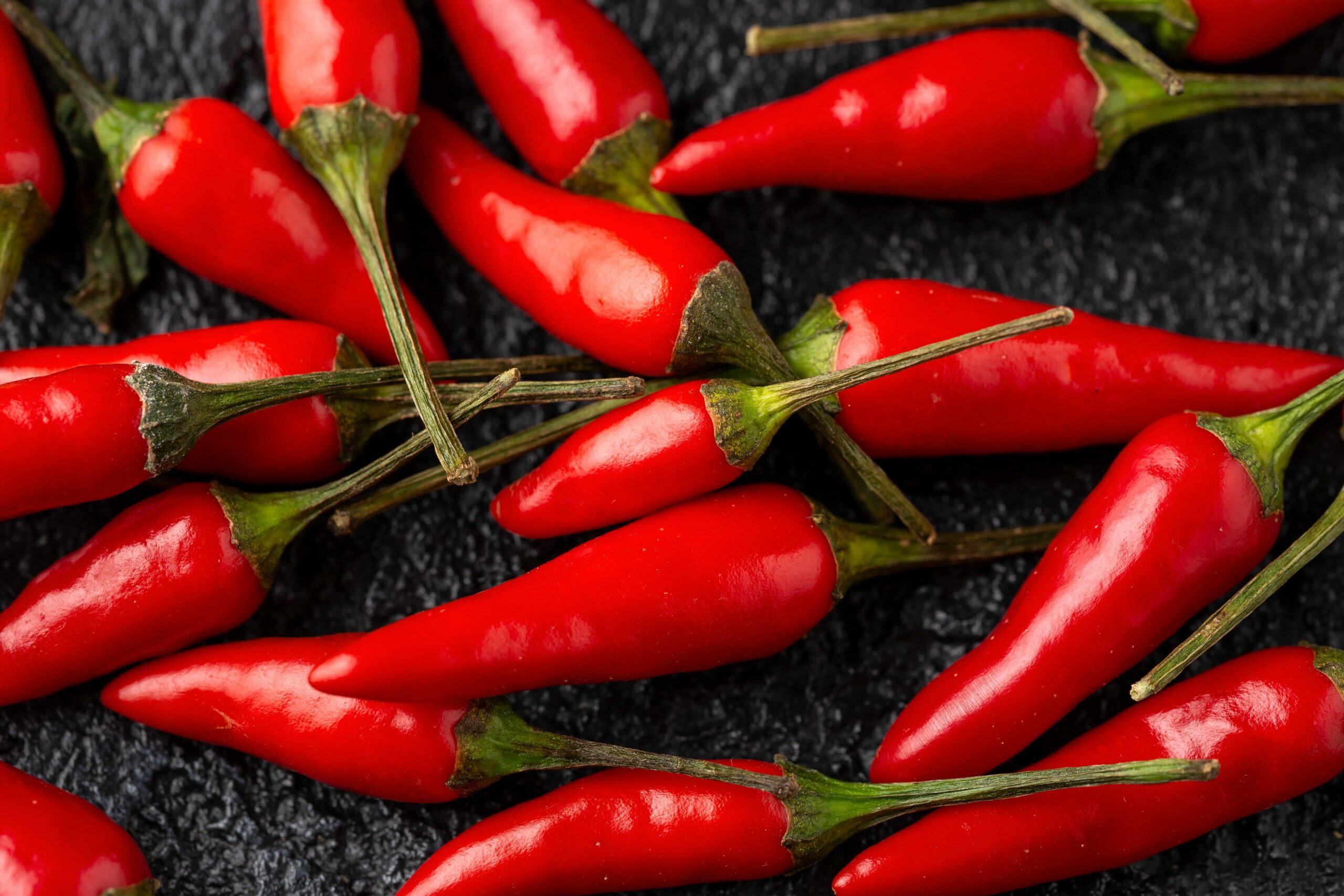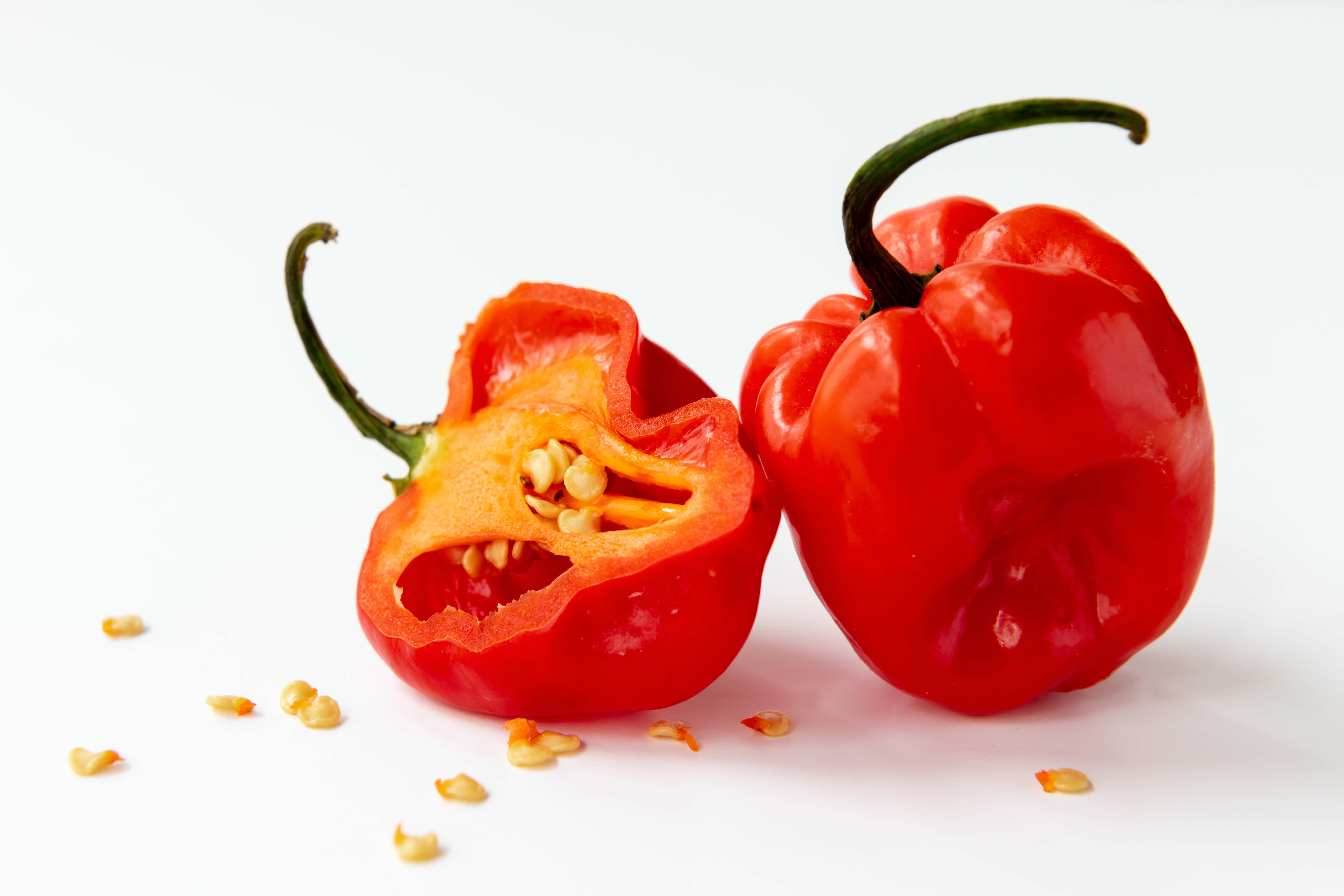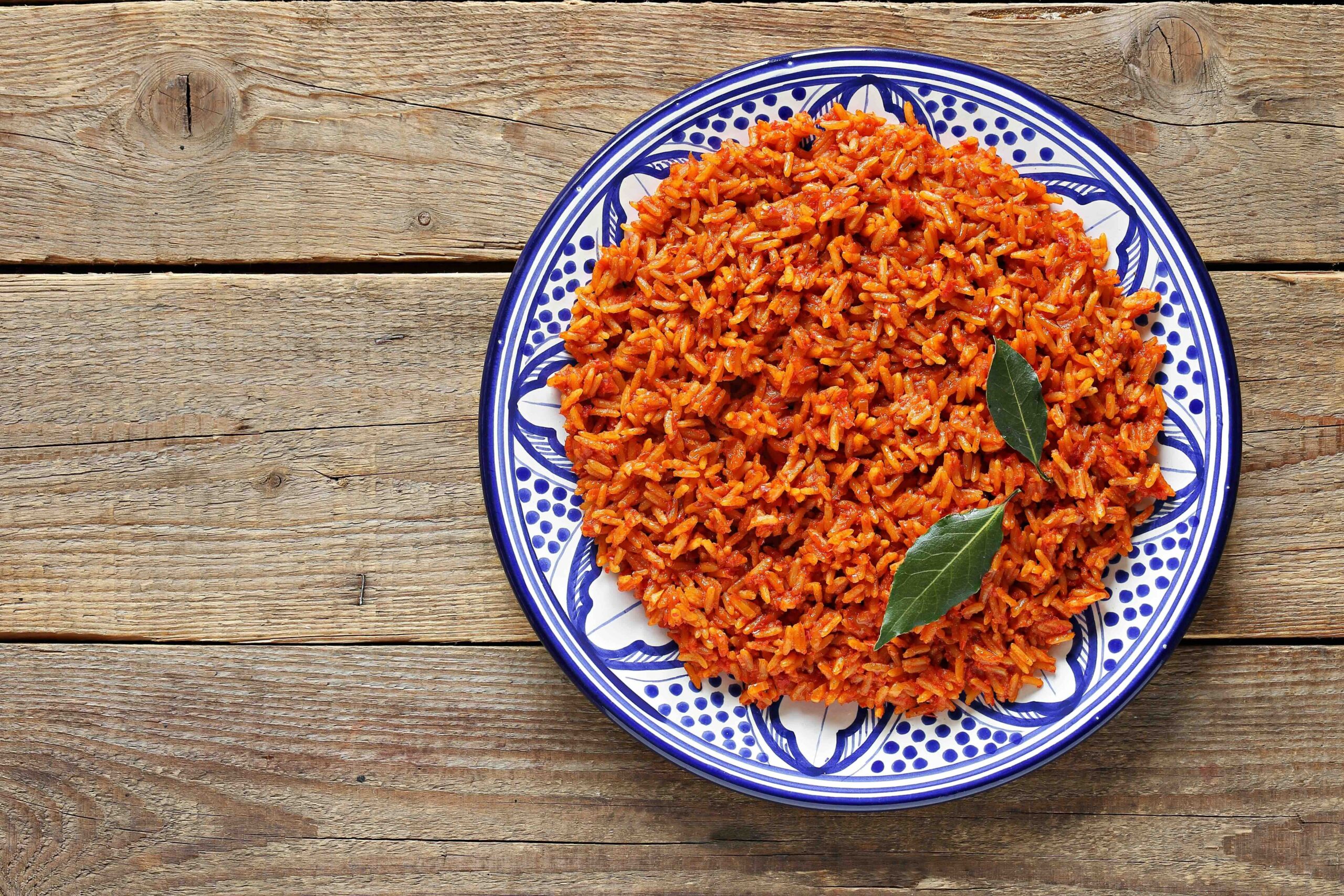Pack a punch to your cooking with these top Nigerian pepper varieties

In Nigeria, peppers are added to almost every meal to bring the heat and punch up the flavour. Read on to discover some of the most popular Nigerian pepper varieties, and how they’re used in some of the country’s most famous dishes.
Nigeria has the largest population in Africa and is incredibly diverse, inhabited by more than 250 ethnic groups, speaking over 500 distinct languages. Nigerian food brings families together, and it’s an important part of the West African’s country’s cultural heritage.
An introduction to Nigerian cuisine
Nigerian cuisine is known for its vibrant, bold and exotic flavours, with spicy soups, rich stews and starchy staples. Nigerian Jollof Rice is a great example, and is a unifying dish across West Africa. This popular one-pot recipe is made from golden sella or easy cook long grain rice, tomatoes, red and habanero peppers, onions and other seasonings, and is regarded by Nigerians as a celebration of the country’s cultural diversity. You’ll find a recipe for Nigerian Jollof Rice at the end of this blog.
The role of peppers in Nigerian cooking
In Nigeria, peppers are staple ingredients – added to almost every meal to bring the heat and punch up the flavour. There are many different varieties, and they come in all shapes, colours, sizes and flavours. Read on to discover some of the most popular Nigerian peppers, and how they’re used in some of the country’s most famous dishes.
Popular pepper varieties in Nigeria
Bell peppers (Tatashe)
Bell peppers, or Tastashe, as they’re widely known in Nigeria, are as the name suggests, large, bell-shaped peppers. They’re usually red, but can be green if not well ripened. Unlike many Nigerian peppers, they aren’t hot and spicy, but sweet and mild – the lowest in the Scoville Heat Scale (a measurement of the level of capsaicin in spicy foods). They’re widely available in Nigerian markets and are used to add colour to dishes (like Jollof Rice), as well as in soups and local spicy stews, such as Ayamase, Ewa Agoyin and Obe Ata Din Din. Unlike most Nigerian pepper varieties, bell peppers can be eaten raw.
Capsaicin: The science behind the spice
Capsaicin is a chemical compound in chilli peppers, (like habanero and scotch bonnets), that makes them spicy. The more capsaicin a pepper packs, the hotter the heat.
Bird’s eye pepper (peri-peri)
Wandering the bustling markets of Nigeria, you may struggle to spot a bird’s eye pepper (or peri-peri), as they’re mostly sold dried or ground. But don’t let this pepper’s size deceive you, although small, thin and pointy, bird’s eye chilli peppers are, fruity, sweet and very fiery, measuring around 175,000 SHUs (approximately 22 times hotter than the spiciest jalapeño). In Nigerian cuisine, bird’s eye peppers are generally used to add sizzle to Jollof Rice, hot pepper sauces, soups, stews and meat dishes.

Scotch bonnets (Ata Rodo)
Scotch bonnets, also known in Nigeria as Ata Rodo, look like small bell peppers and they’re the most common type of pepper used in Nigerian cuisine. Scotch bonnets are native to West Africa, and they’re hot and very very spicy. With a scorching heat rating of 100,000 to 350,000 Scoville Heat Units (SHUs) on the Scoville Heat Scale, they’ll certainly make you sweat. They come in a variety of colours – from green to yellow to red, and red scotch bonnets are used for spicy Nigerian pepper sauces. Scorching heat aside, scotch bonnets boast a complex fruity sweetness and a touch of smokiness, making them the perfect ingredient to be diced or blended into Nigerian stews and soups,like Egusi and Banga.
Scotch bonnets: Too hot to handle
During cooking, scotch bonnets give off intense, spicy fumes which can make it difficult to breathe. They can also cause coughing, sneezing and skin irritation, so you may want to wear a pair of gloves when handling them. And whatever you do, don’t touch your eyes!
Cameroon pepper (black pepper)
Cameroon pepper, also known as black pepper or yellow pepper, is widely used in Nigerian cooking because of its exceptional heat and unique, slightly woody flavour. It’s deliciously aromatic, and often used in sauces, Jollof Rice, pepper soup, Ewa Agoyin stew, and for marinating chicken or meat stock. Cameroon pepper is generally bought ground, although you can buy it whole. And due to its spiciness, you don’t need to use a lot of it while cooking.
Habanero pepper
Habanero peppers are slightly larger than scotch bonnets. Lantern-shaped and vibrantly coloured, they certainly pack a punch on the Scoville Heat Scale – typically around 225,000 SHUs. So like scotch bonnets, it’s recommended you wear gloves when cooking with them. Due to habanero peppers’ intense heat, they’re typically used in Nigerian dishes to spice things up – making them a flavourful ingredient for sauces, stews and vegetable soups. And they’re a powerhouse of essential vitamins too – rich in vitamins A, E, and containing more than the recommended daily intake of vitamin C. Beyond their sweet, fruity and fiery taste, habanero peppers also have many health benefits, from lowering cholesterol to reducing inflammation and aiding digestion.

West African black pepper (Piper Guineense)
West African black pepper, or Piper Guineense, is used widely in Eastern Nigeria and comes from the berries of the black pepper plant (Piper nigrum). Its spiciness comes from the alkaloid piperine, not capsaicin, the active component of chilli peppers that give them their heat. Unsurprisingly, it has a peppery scent, with a woody, clove-like flavour, and is used to add depth and complexity to a variety of Nigerian dishes, namely soups, stews and porridge. It’s also used to add gentle spiciness and subtle bitterness to baked foods, like cakes and bread.
Cayenne pepper (shombo)
Long, slim and moderately spicy, Nigerians refer to cayenne peppers as shombo, bawa or ata ijosi. With a deep, smoky aroma, they’re used when cooking meats and fish to add depth. And rated 30,000 to 50,000 on the Scoville Heat Scale, they’re ideal for infusing spiciness and redness to stews and soups. Cayenne peppers also feature in popular Nigerian dishes, including Moi-Moi, a traditional Nigerian steamed bean pudding, accompanied by Jollof Rice and fried plantain, and Gizdodo – a Nigerian side-dish medley of chicken gizzards and fried plantain, tossed in a delicious peppery sauce.
Peppers hold a special place in the heart of Nigerian cuisine, and you should now be up-to-speed on some of the most popular Nigerian pepper varieties. There are approximately 4,000 varieties of chilli peppers worldwide, and you can discover some of the hottest in our ‘Guide to Chilli Peppers,’ which features The Carolina Reaper – the Guinness World Records’ official hottest pepper since November 2013 (400 times spicier than a typical jalapeño).
Recipes featuring Nigerian peppers
Nigerian peppers feature heavily in a variety of popular Nigerian dishes. But to give you a taste, here’s how some of them are used in one of Nigeria’s most famous dishes – Jollof Rice, a staple in West African cuisine made from rice, tomatoes, onions, peppers and other seasonings.
Nigerian Jollof Rice recipe
To cook Nigerian Jollof Rice, you’ll need the following ingredients:
Easy cook long grain rice
Tomatoes (canned, fresh, or both)
Tomato puree
Red bell peppers
Scotch bonnet peppers
Red onions
Thyme
Curry powder
Bay leaves
Oil
Salt
Garlic
Chicken, beef or vegetable stock
Method:
1. Start by chopping the tomatoes, red bell peppers (approx 3), scotch bonnet peppers (1, 2, or more if you like it really spicy), and onion into chunks and puree in a blender along with ½ cup water until smooth.
2. Dice a red onion into small, uniform pieces. Add around half a cup of oil into a large pot and when hot, add the diced onions and fry on a medium heat until they become translucent.
3. Next add the tomato puree and stir along with the onions on a medium heat, then add the blended pepper mixture from step 1, stirring well.
4. Season with bay leaves, dried thyme, salt, garlic and curry powder. This is a good point to taste, and if needed, add some more seasoning.
5. While the sauce is cooking, wash your long grain rice and drain to remove excess starch. When the sauce has thickened, you can add the washed rice and stir it all together along with your stock cubes.
6. Add in enough water to cover the rice – too much will make the Jollof soggy.
7. Cover the pot and bring the rice to the boil. Then reduce to a low heat and continue to simmer until the rice is cooked through (approximately 20-30 minutes), stirring occasionally. Once finished, turn off the heat and leave the rice to steam for approximately five minutes.
8. You’ll know when your Jollof is cooked because it will have absorbed all of the liquid. If in doubt, taste test, and if needed, cook for a further 5-10 minutes.
9. You can enjoy Nigerian Jollof Rice on its own, or serve with chicken, turkey, Moi-Moi, gizzards or sweet, ripe fried plantains. Locals tend to serve Jollof Rice with a side of Nigerian salad (similar to coleslaw).
Five top tips for cooking Nigerian Jollof Rice:
- Many Nigerians believe Jollof tastes best when it’s slightly burned, as it adds a bit of smokiness to the dish – but you don’t want to burn the rice too early on.
- Use red onions instead of white onions – it adds sweetness to balance the spice.
- Make sure your pot is large enough so your rice has room to fluff and expand during cooking.
- If you’re in a rush, or just want to shorten the cooking time, cover the rice with foil before adding the lid to the pot.
- If there’s too much water in your Jollof but the texture looks good, transfer your rice into a wider pot, turn up the heat and leave uncovered – this will allow the water to evaporate quickly.

Chilli Recipes



